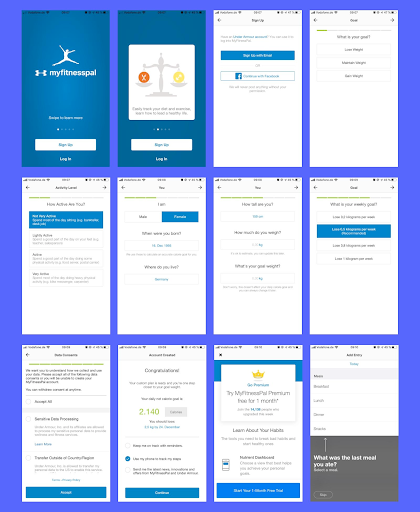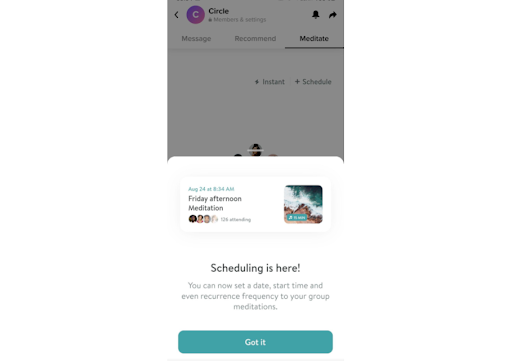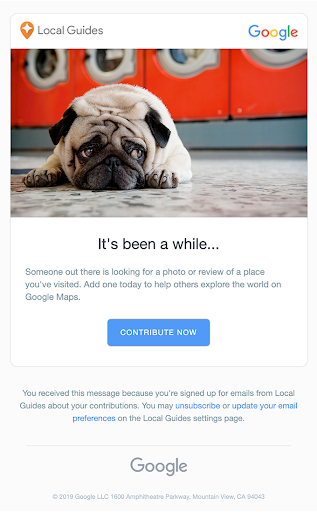
What is App Engagement + Powerful Tips to Increase It
Let’s be real. Most apps have an appalling 30-day retention rate. On average, you’re looking at a 95% churn rate — or higher. That means there’s a good chance all the time and effort you spent attracting users will be wasted within a month. Even worse, you’ll have to hustle to find replacements.
It doesn’t have to be this way. There’s a reason some apps constantly top the charts—they have incredible app engagement. If you want to follow in their footsteps and replace one-off users with raving fans, you need to similarly prioritize this metric.
In this guide, we’ll show you how. You’ll learn:
What app engagement is
Why learning about it is important to improve your retention rates
Seven proven strategies for increasing engagement in your user base.
Let’s get started!
What is app engagement?
App engagement measures the quantity and quality of user interaction with a mobile app. It’s not enough to assess how often people open your app. True app engagement analysis digs deeper and explores user behavior during these interactions.
Why is app engagement important?
Engagement is critical to your app’s long-term success. With over seven million apps vying for users’ attention, fostering high app engagement levels offers several benefits:
Reducing churn
Generally speaking, when engagement rates go up, churn rates go down. The more engaged your users are, the fewer will abandon ship. If you want to keep more hard-won customers, improving app engagement should be a priority.
Boosting revenue
Engaged users are more likely to make in-app purchases and participate in other revenue-generating activities.
Building brand loyalty
Engaged users are less likely to switch to a competitor. On the contrary, they can become advocates and recommend your app to family, friends and colleagues. High app engagement doesn’t just help you hold onto existing users, but attract even more.
Generating better insights
It’s hard to optimize an app if you don’t understand how people are using it. Increased engagement levels generate more data, so you can gain deeper, richer insights into user behavior — and prioritize improvements that will actually make a difference.
How do I measure app engagement?
Effectively measuring app engagement can get a little tricky. There’s no one “app engagement metric.” Instead, you’ll need to assess a combination of metrics:
Active Users (DAU/MAU): This is arguably the most common performance indicator when it comes to app engagement. Tracking the number of active users by day (Daily Active Users or DAU) or month (Monthly Active Users or MAU) gives a quick insight into how often users return to the app. Higher numbers of daily active users mean a higher engagement rate.
Retention rate: With a longer-term view than DAU or MAU, this measures the percentage of users who return to your app after the first visit over a given period of time (typically 30 days). You can also look at retention over a week or even three months. The higher your retention rate, the higher your app engagement.
Churn rate: The opposite side of the coin to retention, churn measures the number of people who stop using your app over time. A high churn rate means low app engagement.
Session length: It’s not enough to analyze how often users open your app. You also need to know how long they use it. This metric measures the duration of each session, with longer sessions suggesting higher levels of engagement.
Conversion rates: Disengaged users rarely make purchases. Your app’s conversion rate can help gauge engagement levels. A jump in conversion rate should also mean higher app engagement.
Launches: This refers to the number of people opening your app on a daily, weekly or monthly basis.
Pro tip: If you’re looking to improve your launches, experiment with push notifications to prompt users to open your app.
There are several ways to track these metrics to measure app engagement. A mobile app analytics platform can consolidate several data sources in one place for easier analysis. You can also use customer feedback, heatmaps and session replays to understand how user behavior changes over time.
Remember, there’s no right or wrong way to measure app engagement. It all depends on your tools, preferences and processes. That said, a good rule of thumb is the more metrics you monitor, the easier it is to form a complete picture of your app’s engagement levels.
How can I increase app engagement?
There are plenty of strategies you can use to boost app engagement. Here are our top seven:
1) Improve your onboarding experience
A great onboarding experience sets the stage for high app engagement by removing friction from the start.
Onboarding is a great opportunity to educate users about key features, take them on a tour, and prompt immediate interactions. Be sure to tailor the onboarding experience to the user’s preferences and behaviors as much as possible.
Don’t be afraid to create an in-depth onboarding experience, especially if your app has a lot of features or comes with a bit of a learning curve. MyFitnessPal has a 12-step process. Instead of manually filling out profiles, users answer a few simple questions about their health and fitness goals — one question per screen — and then immediately receive a customized meal plan. The app also employs progress bars to deter users from getting overwhelmed and bouncing out of the flow prematurely.

When in doubt, use A/B testing to experiment with longer or shorter versions of your onboarding experience. Track how many users make it to the finish line and how often they use the app in the future. You may just find that a longer process works better.
2) Send relevant push notifications
Want to make users open your app more often? Why not just send them a message to that effect?
That’s the idea behind push notifications. In 2023, the average opt-in rate for Android users was 79.5% and 51.4% for iOS users.
To ensure push notifications are useful, relevant and engaging, it’s important to consider:
Behavioral data
User preferences
User location
Any push notification can make a user look at their phone. But it takes a timely and relevant one to make them take action. Spotify, for example, incorporates personalized Daily Mixes.

To improve your odds of success, schedule notifications based on your user’s time zone or optimal engagement time with the app. But avoid going overboard by sending dozens of unanswered notifications. If users don’t respond to one or two push notifications, don’t think sending them a dozen more will finally make them take action.
3) Optimize in-app messaging
In-app messaging is a great way to engage people who are already using your app. It’s also effective. Over one-quarter of all in-app messages are read on medium-performing apps, while almost half (44%) of app messages sent by high-performing apps (those in the 90th percentile) are read.
Like push notifications, these messages should be timely, relevant and used sparingly. Don’t spam your users, but provide value by guiding them through new features, offering support or promoting special offers. Meditation app Circle is a great example, which uses in-app messaging to showcase their helpful scheduling feature.

4) Gamify your app
Some apps make you feel compelled to open them and continue your streak or check in on your progress. That’s the power of gamification.
Gamification integrates game-like elements based on behavioral science to make the user experience more engaging and fun—you know, like a video game.
There are plenty of ways to introduce gamification into your app, including:
Points
Leaderboards
Daily challenges
Progress updates
It’s not enough to make users come back, though. You also need to reward them. Make sure to celebrate achievements and milestones.
Duolingo does gamification brilliantly. The company designed its language-learning app to work like a game to make studying more fun and keep users engaged. When users master a new skill, they earn a badge they can share on social media. Duolingo's app also lets users:
Level up specific chapters of language learning
Become a Streak Society VIP by using the app every day
Join leagues and compete with other learners

5) Promote new features the right way
If your users get bored, there are millions of other apps waiting to take your place on their home screen — over 1.7 million on the App Store alone. New features are a good way to keep things fresh, but it’s also important to introduce them the right way. Keep users informed through well-time push notifications, emails, in-app messages and in-app tours demonstrating how to use it.
6) Reach out to inactive users
Your app is going to lose users — that part is unavoidable. But that doesn’t mean you have to sit quietly and hope that someday they’ll return —go out and grab them! Well, not literally. But do reach out by email and encourage them to re-engage.
Use analytics data to personalize these re-engagement messages by addressing their concerns or promoting new features you think they may like.
Alternatively, you can try to tug on your users’ heartstrings. Just look at the expression on this pug in Google’s re-engagement email, urging local guides to make another contribution. They know what they’re doing.

7) Incorporate customer feedback
Do you know why your users love your app? Or why they’ve left? No? Then, how do you know how to improve your app to increase engagement in the future?
Voice of the Customer — the process for collecting and analyzing customer feedback — can uncover critical insights. This typically entails:
In-app surveys
Feedback forms
Customer support messages
Whatever you do, just make it easy for users to share their opinions — especially since a small minority will actually take you up on the offer.
Few apps do this better than Uber, which asks for feedback after every single ride.

And for goodness sake, act on the feedback you receive! You may not be able to re-engage churned visitors, but you can improve so that more users don’t churn in the future.
Back to you
Now you know what app engagement is, it’s time to get to work. You won’t improve app engagement immediately, but you can put yourself in the best position by taking the following steps:
Find a tool that can help you unlock app engagement metrics like your DAU and retention rate
Review real-time session replays of customers navigating your onboarding experience
Draft a re-engagement email targeting inactive users
Meet with your product and editorial team to revise your content calendar to notify customers of new features immediately
Cross off the first of these action items today by booking a free demo of Glassbox. Our digital experience intelligence platform captures 100% of user interactions and technical events, so you can optimize your app based on accurate, real-time, and actionable insights into your users.








